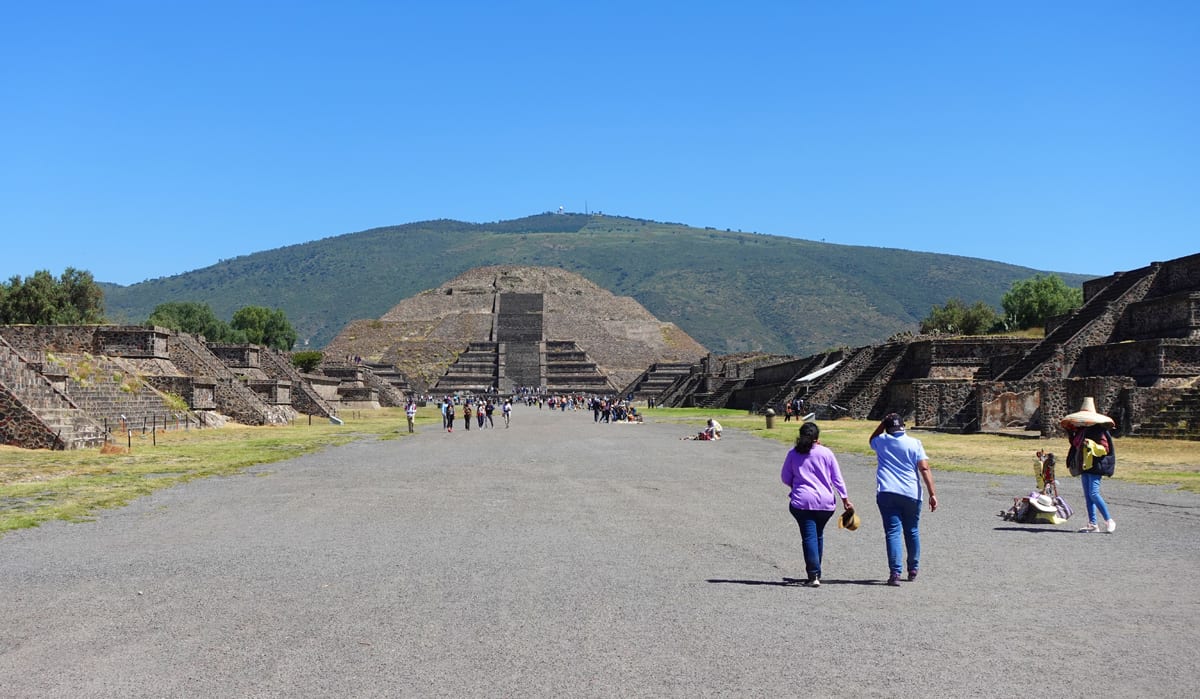
Many years ago I visited Teotihuacan with my mother. I was less than impressed – Teotihuacan was actually the most disappointing experience that I had in Mexico up to that point.
What makes all the difference with Teotihuacan is the way you visit it. We had done it independently, taking the bus from Mexico City. Once at the park, we had gotten out at Gate 2 where we stared down a long concrete road at the temples in the distance.
We had done everything wrong. It was hot, humid, and my mother got tired walking. I think we lasted about 2 hours before calling it quits and taking the bus back.
So on this latest visit to Mexico city, Lissette and I were determined to visit Teotihuacan the right way.
We booked a tour with Vibe Adventures, a tour operator specializing in authentic, off-the beaten-track experiences. Although Teotihuacan is the most popular daytrip from Mexico City, the way Vibe Adventures does it is unique as I’ll explain below.
Teotihuacan – A bit of History
A lot of people think Teotihuacan is an Aztec site. It’s not. it predates the Aztecs by almost 2000 years. Who built it is a mystery: some scholars think it might have been the descendants of the Totonac people, a people who inhabited the northern parts of Veracruz and Puebla states. There is a lot of disagreement amongst experts. But what they do agree on is that Teotihuacan was, at its zenith (estimated to be from 100 BC to 500 AD), both the largest city in the Americas as well as the most advanced civilization on the continent. The city covered approximately 19 square kilometres (12 square miles) and had an estimated population of about 250,000. The city was multi-ethnic, with many of its citizens coming from Oaxaca and the gulf coast but with many others coming from as far away as current-day Guatemala.
Teotihuacan collapsed as a city in the 7th or 8th century. Again, the reasons are a mystery. Some say it might have been an internal uprising, others say that climate change at the time ruined agriculture in the area. Whatever the reason, the city was abandoned. It was the Aztecs who discovered the site in the 1300’s, about 600 years after its collapse. By then it was covered by earth and vegetation. The Aztecs excavated some of the site and were awed, naming it “Teotihuacán” (“the place where gods were created”).

Summary of the Tour
Both Carlos and Freddie, our tour guides on the trip (and brothers), are archaeologists with deep knowledge of Teotihuacan. They’re not just a bunch of guys with a van. Besides running tours, they work 3 days a week at the site (as Carlos told me, less than 20% of the site has been unearthed and explored. So there’s still much work to).
We would spent approximately 4 hours at the site, visiting the three main temples: the Temple of Quetzalcóatl, the Pyramid of the Moon and the Pyramid of the Sun. Visiting on a tour meant being more efficient with time: what people don’t realize is that Teotihuacan is a huge site with 5 different gates. At Gate 1, where the Temple of Quetzalcóatl is located, you are 2 ½ km (1.5 miles) away from the Pyramid of the Moon and the Pyramid of the Sun (which are best visited from Gate 4). Visiting solo you have to walk the distance…on a tour you are driven between gates, focusing your time on the highlights. That, and being given a ton of information by knowledgeable guides, made the visit enjoyable.
Gate 1: Temple of Quetzalcóatl
Quetzalcóatl is known as “The Temple of the Feathered Serpent”. It is thought to have been built starting around 150 – 200 AD.
It’s the smallest of the 3 temples but the most intricate with its many sculptures of serpents and what look like dragons. The builders had created a system of aquaducts within the temple that resulted in water spewing from the mouths of the sculptures when it rained (you might have seen examples of that if you’ve ever watched an Indiana Jones film). The temple was brightly coloured at the time, bringing to life the forms of the various deities. In the 1980’s, the bodies of over a hundred human sacrifices were found under the structure, proving that there was a religious/ceremonial aspect to the temple*.
*It’s highly recommended to visit Mexico City’s Anthropology museum (one of the best museums of any kind that I’ve seen anywhere) to see a model of what the temple of Quetzalcóatl looked like at the time.
Next to the temple is a huge square (the Ciudadela) which was the meeting place of traders when they arrived in Teotihuacan. Here they would be received – in the center of the square is a raised altar where priests would welcome the visitors. Amazing fact: the builders perfected the art of acoustics. From the altar, voices carry across the whole square. Carlos and Freddie showed us, raising their voices in all directions. The sound echoed across the square. It is unbelievable to think that these early civilizations were capable of such planning (you’ll see the same acoustics at work from the altar at the Pyramid of the Moon). Another trick: clap your hands from the altar. The sound will echo back as the cry of a Quetzal bird. It is extraordinary.
Freddie below with a demonstration of the acoustics in the Ciudadela

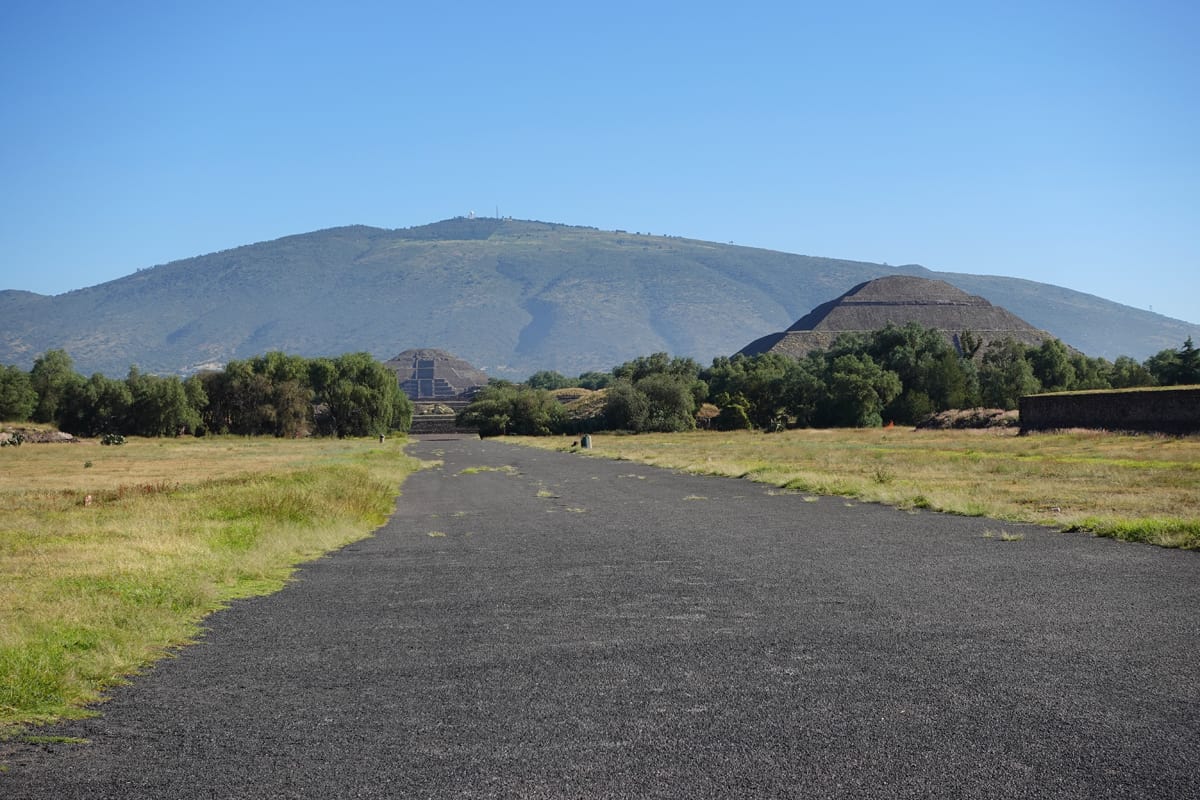
Gate 4: the Pyramid of the Moon and the Pyramid of the Sun
A 15 minute drive (from Gate 1) takes you to Teotihuacans’ most famous temples at Gate 4.
The Pyramid of the Moon lies at the end of the Avenue of the Dead, the main path between the pyramids. It was built between 100 and 450 AD and its main purpose was to perform human and animal sacrifice. It was also a burial ground, bodies were buried within the different layers of the pyramid (excavations uncovered humans, pumas, jaguars and wolfs). At the top of the pyramid is a platform where ceremonies dedicated to the Great Goddess of Teotihuacan (the goddess of water, fertility and the earth) were performed. It was said by the Aztecs that atop this platform stood a 22 metric ton stone figure representing the Goddess. Another mystery was how this figure was hoisted to the top of the pyramid.



The Pyramid of the Moon was built like a Russian doll, with layer upon layer built upon the previous. There are a total of 7 layers. While the Pyramid of the Moon is the 2nd largest pyramid at Teotihuacan (at 46 meters or 150 feet), it is actually soars higher than the Pyramid of the Sun because of its position on elevated ground.
In front of the Pyramid lies the Plaza of the Moon, a huge plaza with a raised altar in the middle. Around it are a series of 12 platforms where thousands of people would watch the watch the sacrificial rituals and human sacrifices.
The Pyramid of the Sun (built starting around 200 AD) is the largest structure in Teotihuacan at 65 meters (or 213 feet).
Little is known of the Pyramid of the Sun. It is thought to have venerated a god. Like the Pyramid of the Moon, an altar stood on top of the Pyramid of the Sun. Unfortunately it was destroyed centuries ago and its purpose remains unclear. Within the pyramid are a series of tunnels and caves. Some say that these were tombs but that also is unclear.
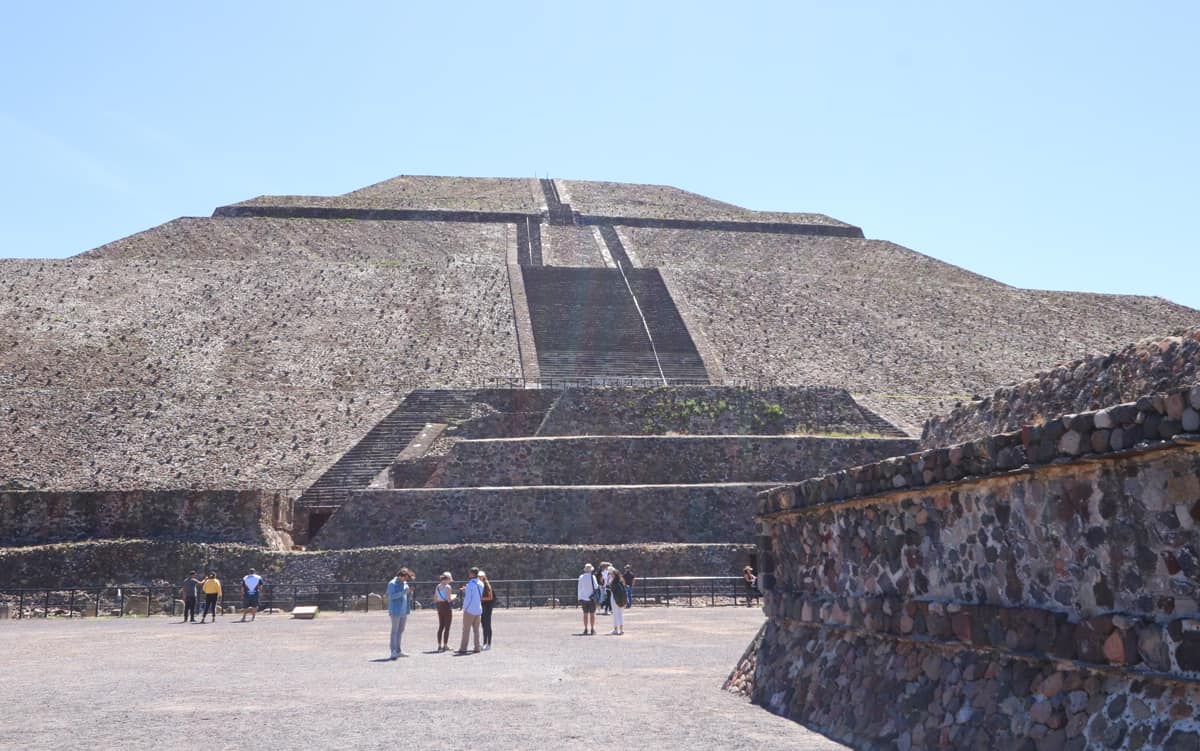
There are many mysteries surrounding the pyramids and it was interesting hearing the tales of Carlos and Freddie. They talked of the perfect alignment of the pyramids in relation to the sunrise, sunsets and the positioning behind the Cerro Gordo mountain which “hid” the pyramids from invaders. They described the mapping of the universe in the Palace of Quetzalpapalotl (located next to the Plaza of the Moon), and they’ll talk of some of the theories linking Teotihuacan to other pyramids in Mesoamerica and beyond including the Egyptian pyramids. We learned a lot over the course of 4 hours.
It was an interesting, informative and entertaining tour.
I’ll say it again: Teotihuacan is a large archaeological site and although you can visit it independently it’s not the right way to do it. Have a look at my previous post on Teotihuacan (from 2016) if you don’t believe me. Taking a tour made all the difference in the world.
Summarizing: we really recommend the Vibe Adventures Teotihuacan tour. Besides everything I mention up above, they pick you up/drop you off at your hotel. It’s the right way to visit Teotihuacan.
Related: 11 Unforgettable Off-the-beaten path adventures in Mexico
Related: Why you HAVE to visit Monte Alban

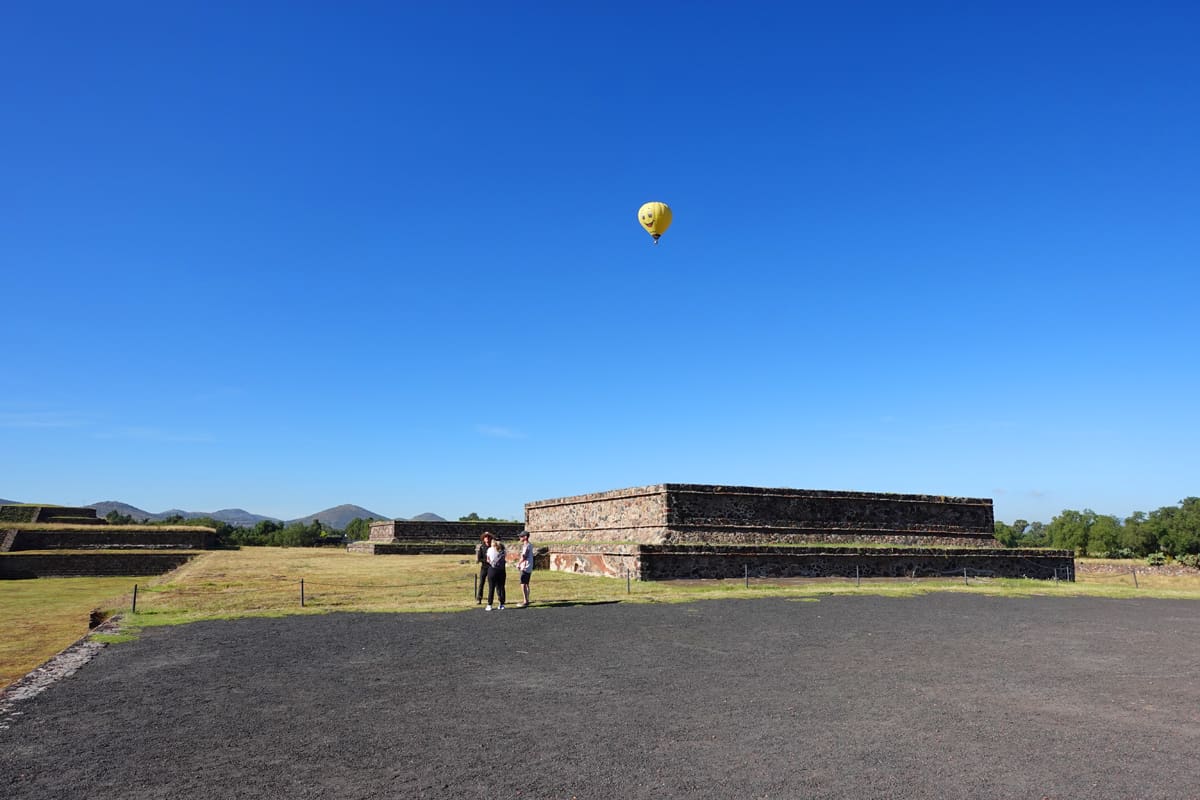
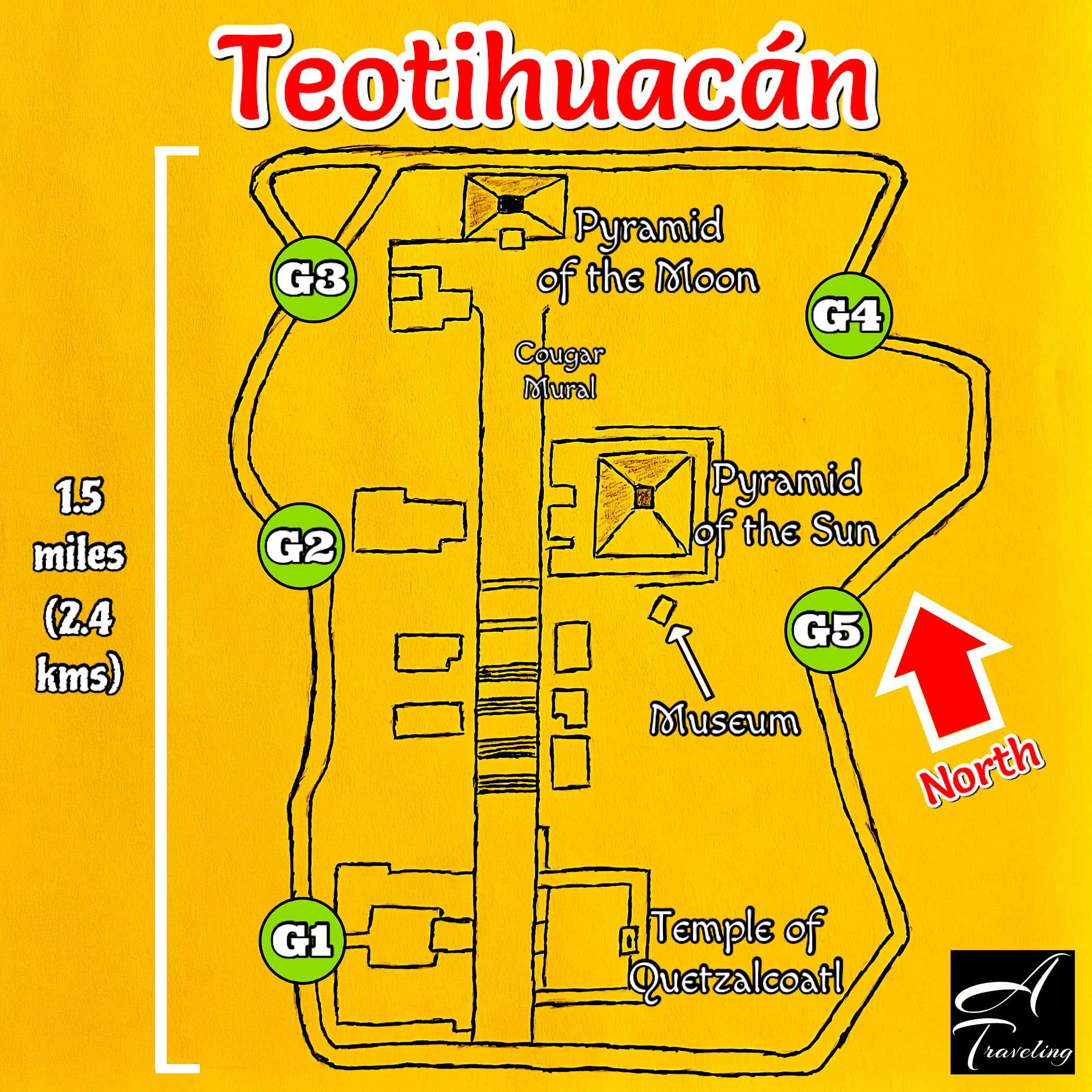
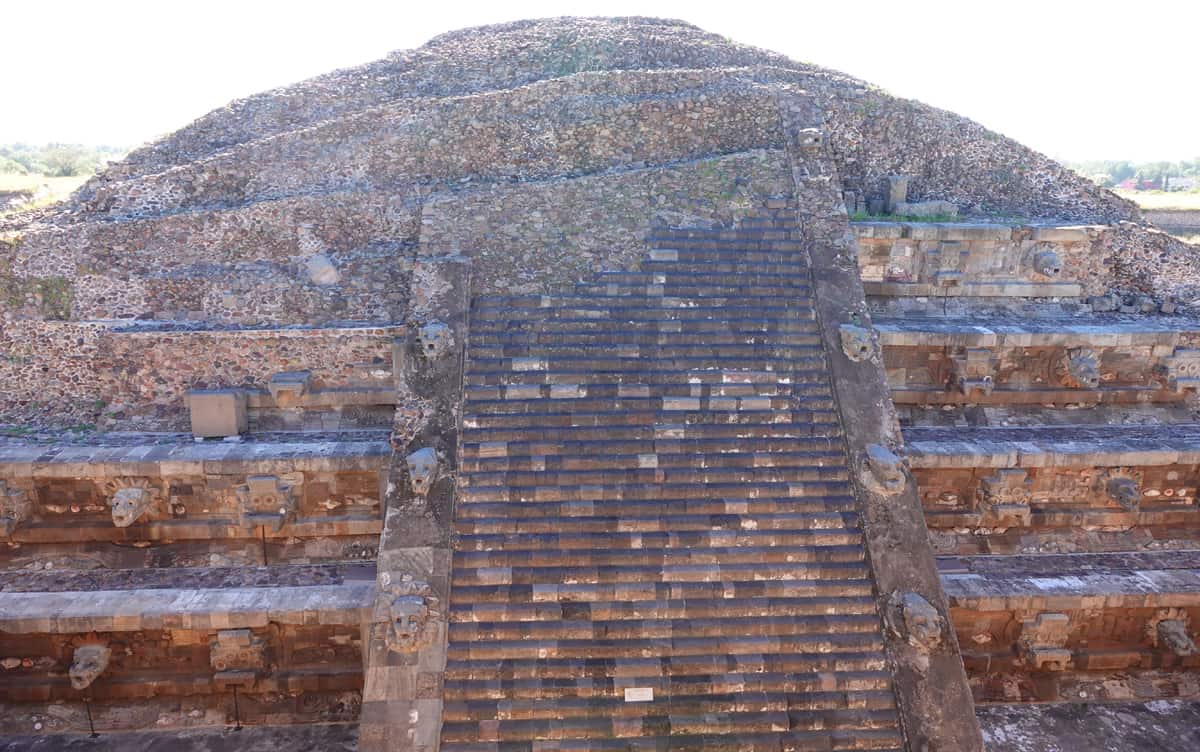

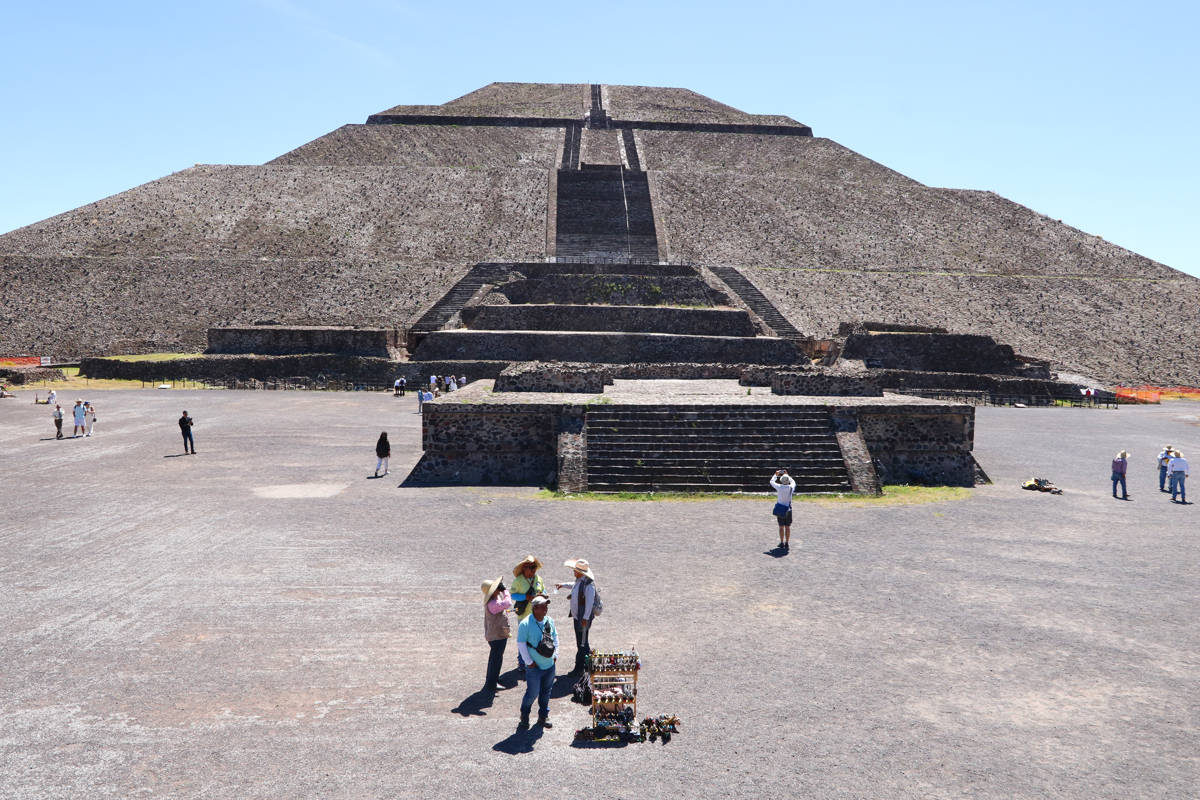

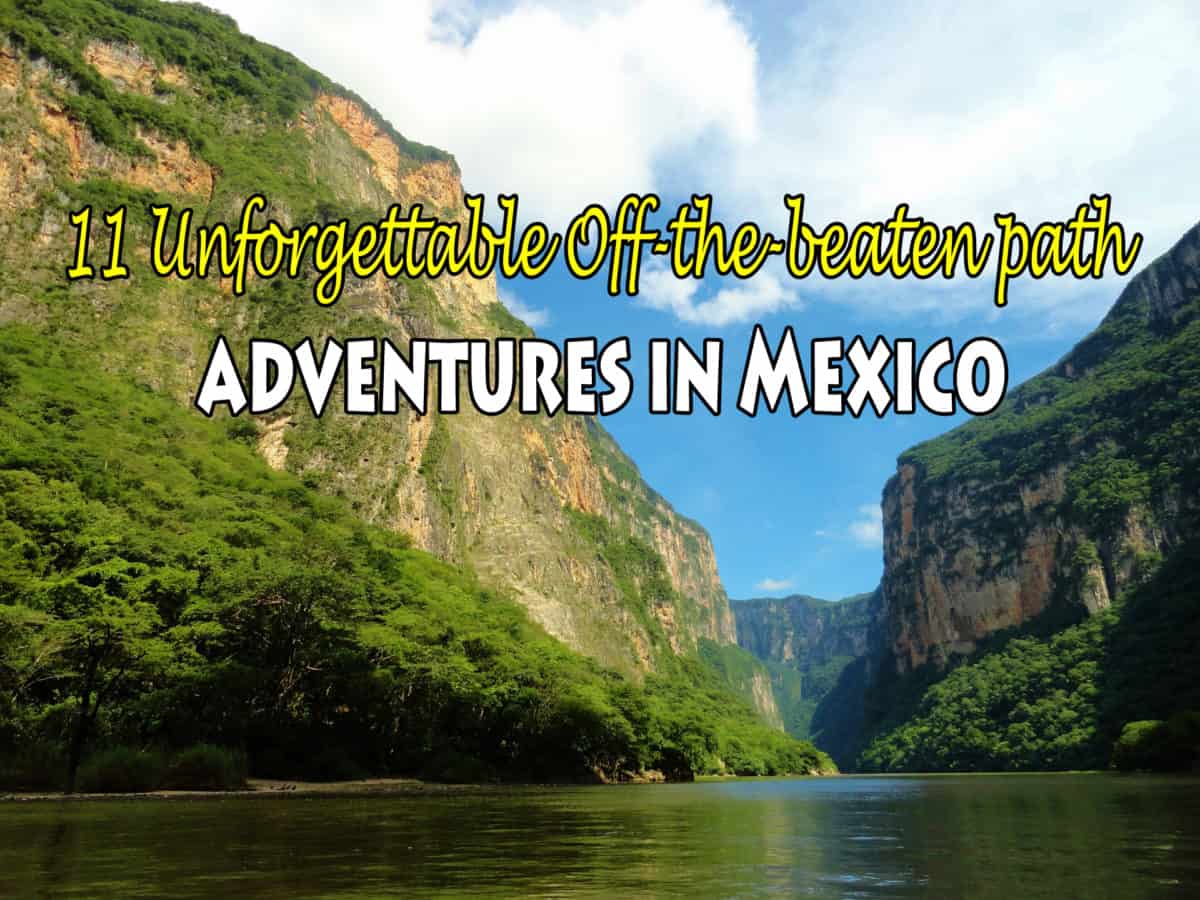
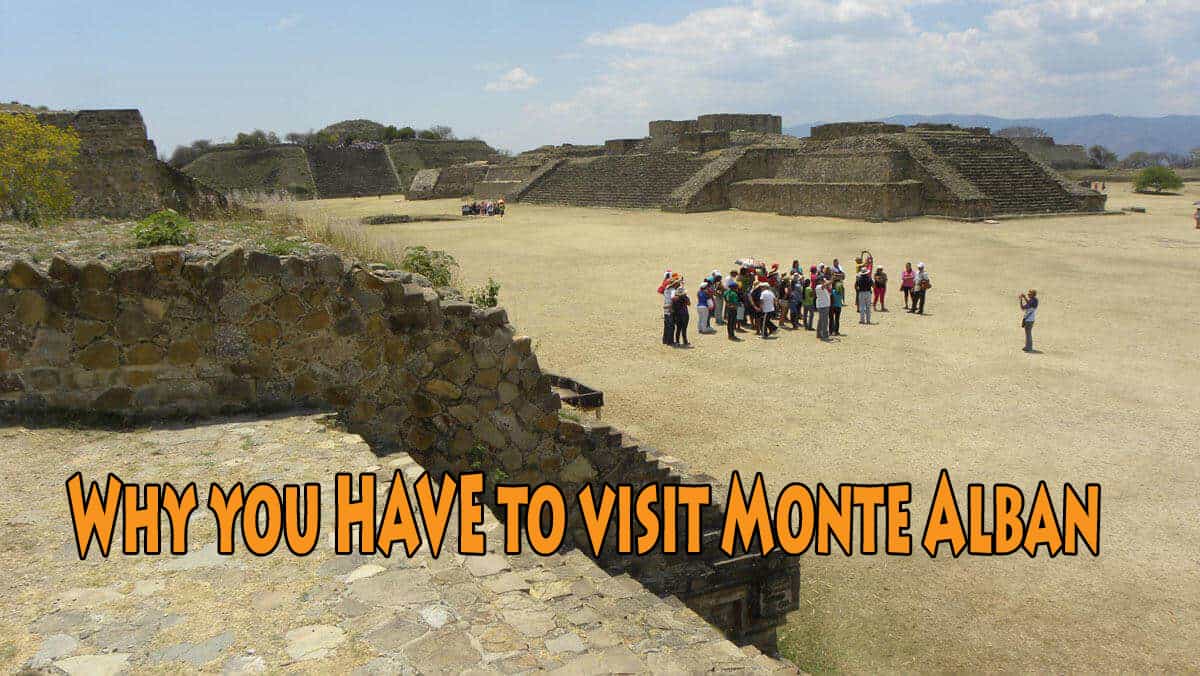
Frank,
Thank you for the review and the tour guide. Hopefully I get to Mexico City. It appears that they do not allow guests to climb the pyramids anymore? I have seen many recent pics with people on the pyramids, so I am guessing that this was a recent decision?
Correct John! No climbing of the pyramids since Covid 🙁